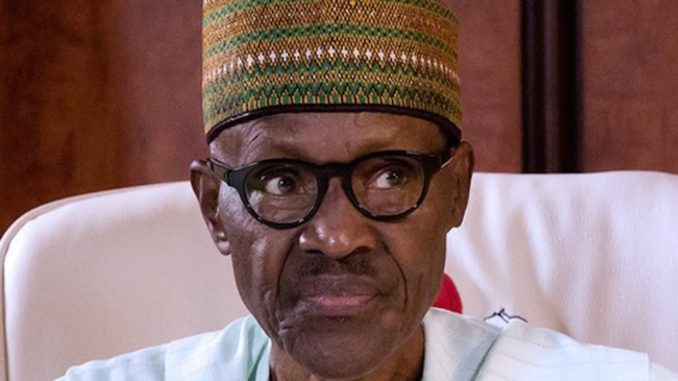
GLOBAL image of nations matters a lot; and some have exploited it to good effect. A recent report on countries’ brand value showed that it is not after all the accustomed story of gloom and doom for Africa as six of its countries are ranked among the world’s 10 “fastest-growing brands.” But, as usual, Nigeria, the self-acclaimed giant of the continent, is not perching in the positive territory.
The United Kingdom-based Brand Finance, a global leader in business valuation and strategy, said Congo Democratic Republic, Ethiopia, Egypt, Ghana, Kenya and Tanzania, joined four other countries in Europe in the top 10. According to the report, Cyprus, Slovenia, Germany and Estonia are the others in this category. These countries’ brand value growth ranged between 27 per cent and 39 per cent. But the United States remains the overall global best.
Providing an insight into how the rankings are arrived at, the organisation said they were determined by performance on dozens of data points across key pillars – goods and services; investment and society; which are subdivided into tourism, market, governance and people and skills. Based on these indices, Nigeria’s brand growth, recorded just six per cent.
It is not surprising that the affected African gainers featured in the report. For instance, Kenya broke new grounds in infrastructure development with a $3.8 billion 480-kilometre railway facility it built within three years under a pact with China. It stands as a signature achievement for President Uhuru Kenyatta’s government. It links Kenya’s biggest port of Mombasa to Nairobi, the capital, which reduces travel time from 10 to five hours.
In its first year of operation, it carried 1.4 million passengers and is believed to have contributed 1.5 per cent to Kenya’s GDP growth. The World Bank had earlier projected its economy to grow by 5.5 per cent this year. Significantly, in September 2016, the country capped lending rates at four percentage points above the 9.5 per cent central bank benchmark rate, in order to reduce the cost of borrowing, stimulate productivity and create jobs.
Ethiopia has become a marvel in aviation business as its national airline remains the continent’s most profitable for five successive years, amid the crash of national airlines in Europe. It has 100 planes in its fleet, which includes the latest Boeing models; and plans to increase the fleet to 150 by 2025, says its Chief Executive Officer, Tewolde Gebremaria. The airline made a net profit of $233 million in the 2017/18 financial year; acquired a minority stake in Malawi Airlines in 2013 and in January this year, signed an agreement with Zambia to re-launch its national carrier that was shut down about two decades ago.
This sector is a boost for its tourism, which contributed 5.5 per cent to the country’s GDP in 2006. The Ethiopian Herald says the country made $3.32 billion in 2016/17 financial year and targets 2.2 million tourists by 2020, for it to earn $29.8 billion annual revenue. Interestingly, tourism is one of Ethiopia’s strategies in poverty reduction.
With its 3,000-year-old archeological history; nine UNESCO world heritage sites; Axum obelisks, highlands and national parks, the country has remained a global tourists’ delight. As tourism bubbles, so has the economy, which the World Bank says has a “strong, broad-based growth averaging 10.3 per cent a year from 2006/07 to 2016/17.” Agriculture, construction, services and modest manufacturing are the key drivers. The outlook is likely to ramp up following its peace pact with Eritrea. Being a landlocked country in the Horn of Africa, it means that it will now access Eritrea’s seaport at Massawa to expand its foreign trade.
In Egypt, tourism is one of its pillars in foreign exchange earnings, evident in the $7.6 billion it generated in 2017. First half of 2018 figures posted $4.8 billion, which means the harvest will likely be higher at the end of the year.
Ghana, at the expense of Nigeria, is also a striving tourism destination in West Africa. Statistics show that it generated $2.9 billion in 2012 from the visit of about 1.08 million people. Its economy witnessed the fastest growth rate in five years in 2017 with the surge in oil and gas production, resulting in GDP growth rate of 8.5 per cent, against 3.7 per cent in 2016. It has 8.3 per cent growth rate projection for 2018.
Evidently, Nigeria appears to be Ghana’s mirror on how not to run an oil economy, the latter’s authorities reportedly said. The taunt is remarkable; and the brazen pillaging of our oil wealth by public office holders and failure to use it to develop other sectors have helped to entrench this denigration in their psyche.
However, there is a huge lesson in all of this for Nigeria. The Kenya Mombasa railway, which connects the ports to the capital, Nairobi, is a shot in the arm. An import-dependent economy like Nigeria’s, which controls 70 per cent cargo traffic of West and Central Africa, has no railway linked to Apapa and Tin Can Island ports. This explains why the ports and their access roads are disincentives to foreign trade and investment; therefore, they are brand deficit for the country.
Nigeria’s quantum leap in brand value is an asset, which it cannot afford not to invest in. Unfortunately, insecurity has become an endless existential challenge here, resulting in dwindling Foreign Direct Investment. But strategic thinking and good governance can reverse this ugly trend.
END

Be the first to comment